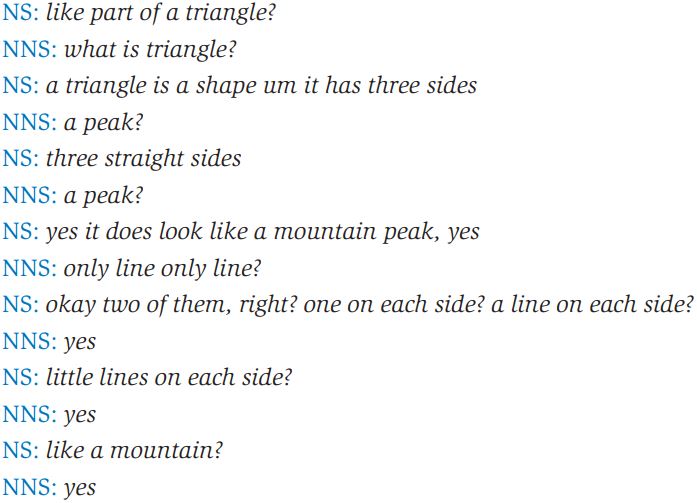
Input and output
 المؤلف:
George Yule
المؤلف:
George Yule
 المصدر:
The study of language
المصدر:
The study of language
 الجزء والصفحة:
192-14
الجزء والصفحة:
192-14
 2-3-2022
2-3-2022
 1062
1062
The term input is used, as in L1 acquisition, to describe the language that the learner is exposed to. To be beneficial for L2 learning, that input has to be comprehensible, because we can’t process what we don’t understand. Input can be made comprehensible by being simpler in structure and vocabulary, as in the variety of speech called foreigner talk. Native speakers of English may try to ask an international student How are you getting on in your studies?, but, if not understood, may switch to English class, you like it? This type of foreigner talk 192 The Study of Language may be beneficial, not only for immediate communicative success, but also for providing the beginning learner with clearer and comprehensible examples of the basic structure of the L2 as input.
As the learner’s interlanguage develops, however, there is a need for more interaction and the kind of “negotiated input” that arises in conversation. Negotiated input is L2 material that the learner can acquire in interaction through requests for clarification while active attention is being focused on what is said. In the following interaction (from Pica et al., 1991), notice how the learner, a non-native speaker (NNS) of English, and the English native speaker (NS) negotiate meaning together. The comprehensible input (i.e. using the word triangle to describe a shape) is provided at a point where the learner needs it and is paying attention to the meaning in context.

In this type of interaction, the learner experiences the benefits of both receiving input (hearing the L2) and producing output (speaking the L2). The opportunity to produce comprehensible output in meaningful interaction seems to be another important element in the learner’s development of L2 ability, yet it is one of the most difficult things to provide in large L2 classes. One solution has been to create different types of tasks and activities in which learners have to interact with each other, usually in small groups or pairs, to exchange information or solve problems. Despite fears that learners will simply learn each other’s “mistakes,” the results of such task-based learning provide overwhelming evidence of more and better L2 use by learners. The goal of such activities is not that the learners will know more about the L2, but that they will develop communicative competence in the L2.
 الاكثر قراءة في Linguistics fields
الاكثر قراءة في Linguistics fields
 اخر الاخبار
اخر الاخبار
اخبار العتبة العباسية المقدسة


